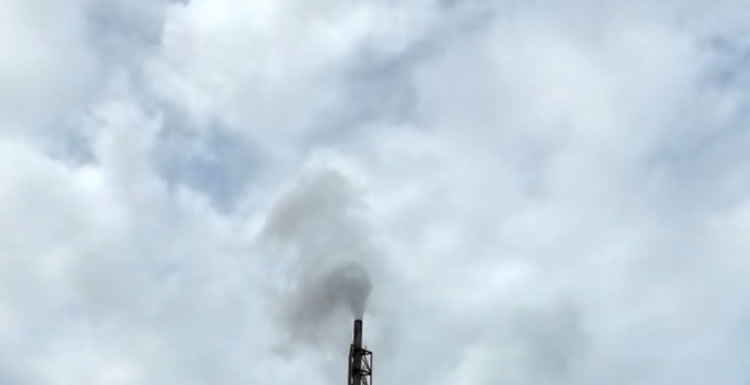- The safety guarantee of driving navigation for the operation of the device
I. Risks existing during driving
1. Sulfur incineration conversion: If the temperature of the sulfur incineration furnace has not reached the combustion temperature of sulfur and sulfur is sprayed rashly, the sulfur cannot be burned and a large amount of sublimated sulfur will be produced, causing irreversible damage to the catalyst and demister. In addition, if the temperature of the conversion bed fails to meet the standard, sulfur dioxide will not react fully and enter the subsequent sections, eventually being discharged through the chimney, causing serious environmental pollution. Furthermore, if the valves along the route from the sulfur-burning furnace to the tail gas chimney are not properly set up, the process cannot be unobstructed and air cannot be replenished. If sulfur is sprayed rashly, it will burn in an oxygen-deficient state, generating a large amount of sublimated sulfur. Moreover, if the conversion regulation temperature valve is not set correctly, the conversion temperature cannot be raised rapidly, resulting in the conversion rate failing to reach the target for a long time. A large amount of sulfur dioxide enters the tail suction system, causing it to be severely overloaded. In severe cases, it may even lead to excessive sulfur dioxide emissions from the chimney, causing environmental pollution. Poor flue gas flow can cause the fan to vibrate and get damaged.
2. Dry adsorption system: The dry adsorption process was not effectively established, resulting in the inability to effectively control the acid concentration and acid flow rate. This, in turn, led to a decline in the air drying efficiency of the drying tower. Moisture in the air was carried into the system, forming condensed acid that corroded the equipment pipelines. In addition, the absorption efficiency of the first and second absorption towers has decreased, causing sulfur trioxide to directly enter the chimney and be discharged, resulting in a large amount of smoke coming out of the chimney, seriously polluting the environment and causing smoke accidents. Meanwhile, if the acid concentration is too low, it will accelerate the corrosion of pipeline equipment and shorten its service life.
3. Water and steam system: If the water supply process is not unblocked after sulfur spraying, the boiler will not be able to supply water in time, resulting in water shortage in the boiler. In severe cases, it may even cause the boiler to burst. If water is not continuously supplied during the sulfur spraying process, it will cause water hammer in the water supply pipeline, which may further damage the economizer. If the valves of the steam pipeline are improperly set, it will cause fluctuations in the boiler pressure, and at the same time, it will lead to significant fluctuations in the boiler liquid level, resulting in full water or water shortage. In severe cases of overpressure, it may even cause a boiler explosion. If water spray cooling is not set up in time, it will cause fluctuations in steam temperature. If the temperature is too low, it will cause water hammer in the pipeline and crack the equipment. If the temperature is too high, it may burn out the pipeline equipment and shorten its service life.
4. Fan System: The normal operation of the main fan is a key prerequisite for the start-up of the equipment. Only when the main fan operates stably can the device be started smoothly. If the main fan is forcibly started before meeting the start-up conditions, it may lead to damage to the main fan, causing the device to shut down for a long time and resulting in huge losses.
5. Exhaust gas system: As the last line of defense for environmental protection of the device, if the exhaust gas system's process is not effectively established, the conversion rate will be low in the initial stage of operation, resulting in sulfur dioxide not being effectively treated and directly discharged into the atmosphere, thereby causing serious environmental accidents.

6. Raw material process: The liquid sulfur pipeline may get clogged due to insufficient or excessive temperature of the insulation steam. If the liquid sulfur transportation process is not completed in advance and air enters the sulfur burning furnace, it will cause the sulfur gun to be unable to spray sulfur normally, which in turn will keep the temperature of the sulfur burning furnace low for a long time and easily lead to equipment damage. After startup, if the supply of liquid sulfur cannot be sustained, the unit will have to be shut down again.
Ii. Causes of Accidents during Driving
1. Unskilled operation of the operators: As the company develops, the promotion or job adjustment of the operators, the operators who take over the new positions need an adaptation process. Especially when organizing the start-up operation for the first time, it is inevitable that there will be some unfamiliar aspects, and the overall control may not be comprehensive enough. During the start-up confirmation process, it is easy to have omissions. At present, the sulfuric acid plant has basically maintained long-term stable operation and has not undergone start-up or shutdown operations for a long time. If one does not engage in regular study and review, relevant knowledge is prone to being forgotten. Once suddenly faced with the task of starting and stopping, one may overlook items due to negligence.
2. Operators feel nervous: Each operator has a different psychological quality. When facing unexpected events or major situations, they often experience inexplicable nervousness. When they are overly nervous, they may forget some familiar operation steps, which in turn may lead to mistakes.
3. Too many differences: The start-up process of the sulfuric acid plant is particularly important and has received special attention from the leadership. Usually during driving, it attracts the attention of many people, and as a result, various different opinions arise. In some cases, there may even be situations where multiple people directly direct the operators. In this situation, operators are prone to lose their ability to think independently, leading to operational confusion and subsequently causing mistakes.
Iii. Safety Assurance of Driving Navigation
Based on the process flow characteristics of the sulfuric acid plant, the start-up requirements are proposed, and in combination with the actual operation key points and indicators, a complete start-up navigation system is customized. This system will provide prompts for each important link in the order of division of labor, achieving comprehensive monitoring without blind spots, ensuring that all preparatory work meets the start-up conditions, and providing comprehensive support for the start-up process.
2. The driving navigation provides a detailed display of each key link. Operators only need to follow the navigation instructions for operation checks, and the error rate can be reduced to zero. At the same time, it reduces the reliance on the operator's skill level, making it easy for anyone to complete the operation.
3. The driving navigation can add or reduce prompt items according to the actual situation of the device to ensure compliance with the requirements of this set of devices. The set values can also be adjusted according to the operation status of the device to ensure safe driving without hindering the driving process. At the same time, a complete set of standardized data and procedures is provided, and everyone follows them without any further disputes.



